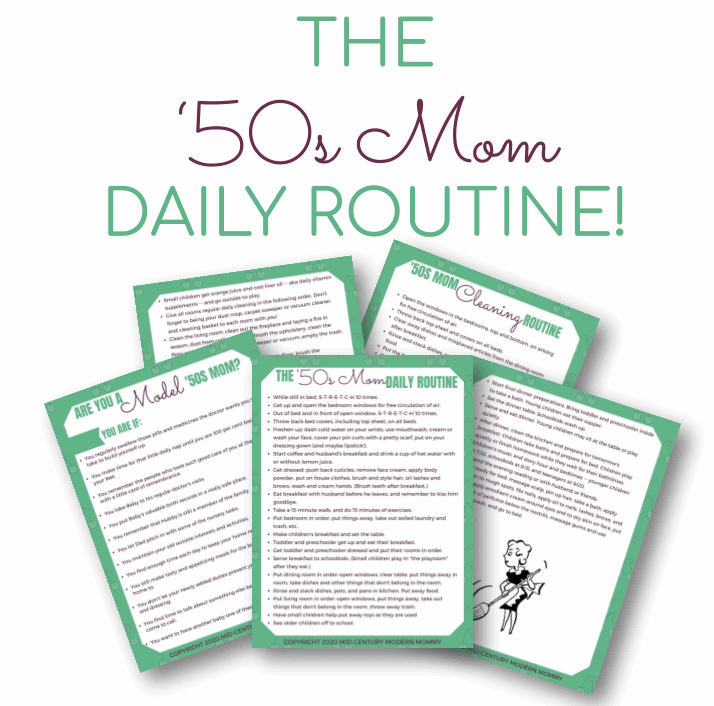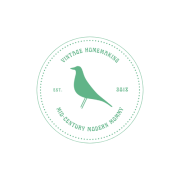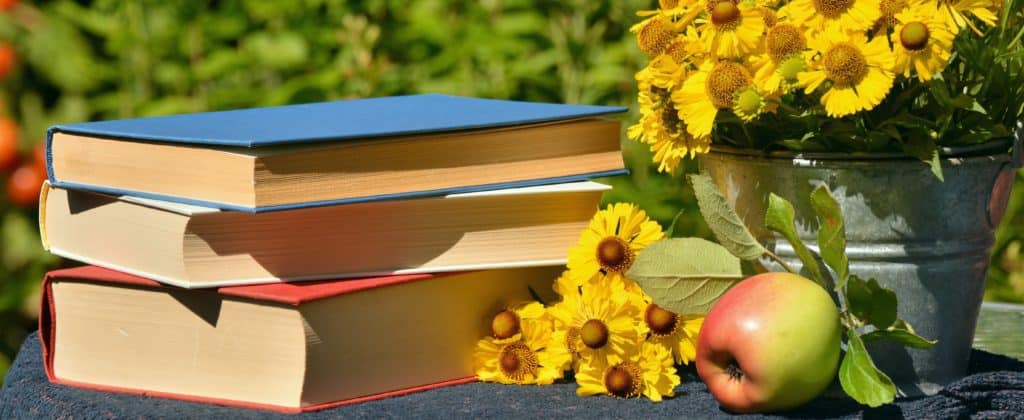Arithmetic is to mathematics what phonics is to reading–essential! The early years of teaching math should not be devoted to critical thinking; that’s like teaching how to write book reports before you can write letters! Children need the basics first so that they can understand math when they reach algebra and calculus. I wrote about how to teach phonics, so here is an overview of how to teach arithmetic simply and easily.

Get Our Mid-Century Mom Daily Routine FREE!
Math Readiness
This post contains affiliate links. If you click a link and make a purchase, I may receive, at no additional cost to you, a small commission. Find out more on my Disclosures page, and thank you so much for your support!
As with phonics, there are four parts to being ready for arithmetic and mathematics. Before you teach arithmetic, you can teach your child about numbers and counting, shapes and colors, and patterns. Really, that is all they need for arithmetic until about age 7 or 8. Traditionally, schools didn’t address formal math lessons until age 10!

Shapes, Colors, & Patterns
The best way to teach shapes and colors is to point at different colors or shapes in the pictures of books as you read together. (Dr. Seuss’s books are GREAT for this! Also, Harold and His Purple Crayon stories usually have very simple shapes for identifying.) It adds to the things you can do together while you read a picture book.
After your child knows the names of shapes and colors, teach patterns by stringing chunky wooden beads in sequence patterns. At this point, pattern blocks and tangrams are also excellent puzzles to master. Give your child at least 15-30 minutes a day playing with one of these math manipulatives, and it will really help their intellectual development.
Also at this age, add a daily coloring page. Make it fairly simple, large pictures, but have them name the colors they use when they show you their drawings. I like to have my children color for at least 30 minutes every day as part of their schoolwork until they are well into elementary school! Coloring at this stage is important for developing fine motor control, and it doesn’t work if it’s done on a screen. So coloring pictures and some good crayons are a good investment.

Numbers and Counting
This is a lot like learning letters of the alphabet. Before a child can “read” a math problem, he needs to be fluent in identifying each number, as well as in understanding what a math problem represents. This is a little more difficult than in language arts because the connections between words and thoughts are a little clearer than the connections between math problems and thoughts.
Numbers
Start with learning the names of the numbers 1-10, but don’t teach him the numbers yet, just the names of the numbers. Just like with the alphabet, the best way to start is with a song. (I use the 10 Little Indians song because the tune is catchy, and it is easy to substitute other words for “Indians”. I usually use “elephants” or “dinosaurs” since those are both 3-syllable words.) Sing it as a fingerplay, over and over, switching up which fingers are which (so he doesn’t think that the number names are the names of the fingers!).
Counting
At the same time, teach him to identify the numbers with the fact that they represent quantities. Don’t start by counting! You don’t want him to think that number names identify the things. Instead, set out groups of objects and teach him to identify the quantities by sight. (“Here are eight cookies.” “How many apples are there?” “Four.”)
After he can identify the groups by quantity, teach him to count things in the group. Count the items in a group backward, forwards, and randomly, so that he doesn’t associate the counting word with the particular object.
Addition and Subtraction
Next, show him how each group is made of the smaller groups. Begin by making sure that he can recognize how many things are in a group without counting one-by-one. For example, teach three by combining two and one, or one and two, things into three and then separating them again.
Do this with many different kinds of objects. When the child can recognize three immediately, move on to four and do the same thing. Keep doing this for every possible combination and separation for all the numbers up to 10.
Don’t introduce multiplication or division yet. Just addition and subtraction. When this is clearly understood with the use of objects, begin shifting to objects which the child can clearly picture but which are not present (houses, toys, etc.)
The final step is to drop the object names and continue practicing combining and separating using only the numbers until the child can answer every possible combination without stopping to think!
Figures
Finally, we go back to the numbers. Write the names of the numbers 1-10 and the corresponding figures in columns. Explain that the figures are used to represent the names of numbers that they have grown used to using.

Arithmetic & Math Facts
So far, everything you’ve done has been to prepare for connecting figures on a page with the idea of math. Now you start book learning. Ray’s Primary Arithmetic is the best early math curriculum EVER! The book moves from writing figures through math facts for all four operations to different measurements. It is a complete early math curriculum in a single book. I usually start Ray’s Primary Arithmetic at the same time that I begin teaching phonics.
Skip the first part of the book, the six lessons on numbers and writing numbers. Those will be done after Lesson 32
Addition
The first three lessons, Lessons 7, 8, and 9, are just a review of what you have been doing. You can skip right over them, but if the child has taken a break, you may want to go over them again.
Lesson 11 is where the new work begins. Now you are going to introduce the child to the numbers 11-20. Do this the exact same way you did 1-10 the previous year.
Teaching the new numbers should be fairly easy. The child should still practice counting by ones, twos, threes, etc., forward and backward, and should also practice the combinations and separations. Take 5 minutes every day to recite the tables at the top of each lesson, and do the word problems for each lesson orally.
Place Value
Lesson 11 introduces the number 11. Once you start introducing these new numbers, you are also introducing the concept of place value. So go slowly! There’s no rush to build a solid foundation.
Figures
Begin by teaching your child to connect the numbers he has been using orally with the figures on a page. This part is just like teaching the alphabet, but for math!
The entire first section of Ray’s Primary Arithmetic is about mastering the numbers 1-100. In the first lesson, you teach the child about the numbers 1-9. This is an excellent lesson to linger over while you count many groups of 1-9 things together, and he practices writing the figures.
The next few lessons take you through the rest of the numbers to 100. Don’t do these lessons now! Wait until late. Skip ahead to the addition section.
Write the name of the number in a column on the left, and the corresponding figure on the right. Explain that we use figures as a shortcut to represent the number. (This will make more sense when he has to write numbers in expanded form in his later math lessons!)
There two lessons at the end of this part where you read and write the numbers out of order after learning all the numbers. DO NOT SKIP THIS! Being able to read numbers out of order is crucial to mastery! Don’t move on until they can see and say numbers at 300 counts per minute, even out of counting order. And also see and write 120 figures a minute.
Signs
The next big shift comes with Lesson 21. Now you are teaching signs. To teach signs, you begin by writing out the tables they have been reciting in words: “Four and two are six.” Then show how that “math sentence” can be written in symbols: “4+2=6;” and explain that the plus sign stands for and, etc. Now, as you work through these lessons, writing the questions and answers in symbols, you also move into using the addition flashcards.
The use of flashcards is a mastery activity. Even though you keep working through the book and chanting tables, with every operation (addition, multiplication, subtraction, division) you’ll add a set of flashcards. With the flashcards, your child is working to be able to say each math fact in a little less than a second. The goal for mastery is 60-80 math facts per minute with no more than two mistakes.

What to Do Next
Keep working through the book in the same way for the rest of the lessons. Work through the lessons orally, reciting the tables and answering the word problems. At each review lesson, introduce the signs for that operation and write out the problems.
Once you’ve gotten this far, the most important thing is to get flashcards and drill all the math operations every day. I have my children work to beat their previous score for doing 3 minutes of math problems (addition, then subtraction, then multiplication, then division, through 12), and then they practice working the problems (usually 3-10 problems a day) and copying a times table. This is the method I follow through measurement and long division.
Practice is the most important thing for math facts.




